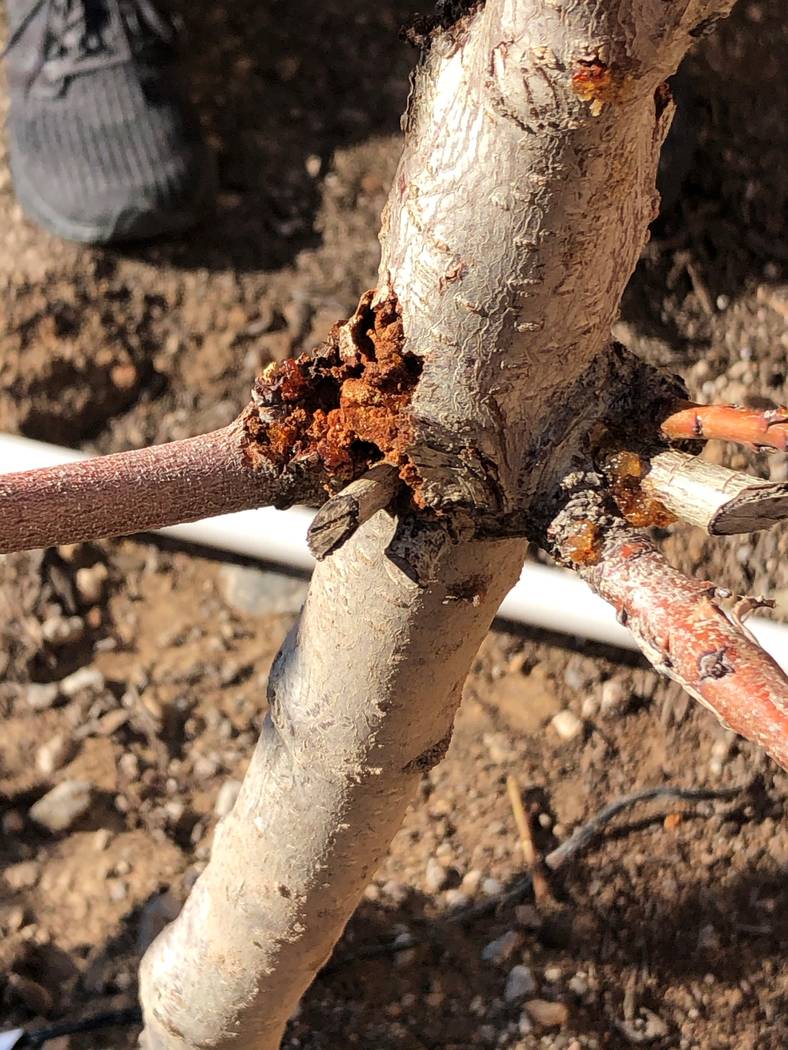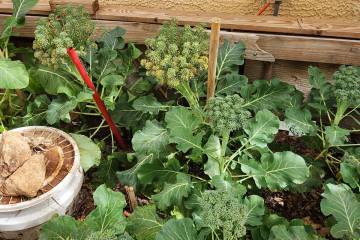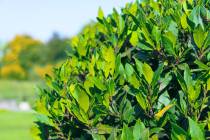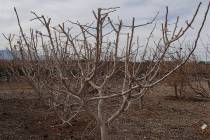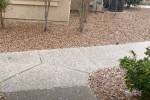Sanitize blades of loppers, hand shears before using
I had a college professor who said the best time to prune was when the pruning tools were sharp. It was a little bit of a joke because most people believe the only time to prune plants is during the winter.
That’s true if you’re using a chain saw, reciprocating saw, hand saw or loppers, but if you’re using hand shears, my old college professor’s advice was on the mark. If you’re using hand shears to remove some offensive plant growth, you can do that any time. Just make sure it’s sharp.
If you’ve ever taken my classes on pruning, you know that I’m a stickler for three things when preparing to prune: adjusting loppers or hand shears so they don’t rip plants instead of cutting them, making sure the blade is sharp for the same reason and sanitizing the blades. You wouldn’t go into a doctor’s office and let him or her use a dirty needle or scalpel. The same holds true for plants.
Chances are nothing will happen when using dirty tools. We use the same logic for protecting ourselves with insurance: It won’t happen to me.
In 50 years of pruning plants, I have seen an actual problem develop from dirty tools perhaps five times. But I have seen unexplained problem diseases develop later to pruned trees and shrubs many other times. The usual fault is claimed to be from borers. Was it?
There are at least eight plant diseases I know of that can be transferred to plants through pruning cuts using dirty tools. There are probably more than this. Once saws, loppers or hand shears are sanitized, they should be placed back in a scabbard, draped around a neck or hung on a neighboring tree but never laid back on the ground. Six of those eight diseases can come from laying sanitized tools on the ground after they’ve been sanitized.
What to use for sanitizing equipment? I prefer spraying the blade with isopropyl alcohol, bought just about anywhere, after the blades have been washed with soap and water. Some people prefer bleach, but if you use bleach, you will need to oil all of the metal parts so they don’t rust. In a pinch, I will wash the equipment and use a butane lighter to heat the blades. That works too.
Q: I recently planted a 15-gallon peach tree that I had in a planter pit all winter. I noticed that the bark was soft and almost rotting at the joints with some sap coming out. I am afraid that this can be borers but can’t say with certainty.
A: Judging from the picture you sent with all the dried sap coming from the tree, I am 100 percent certain this is borer damage. This damage started last year. Borer adults in Southern Nevada are beetles that fly and don’t bother a tree until it’s time for the female to lay its eggs.
Adult beetles lay their eggs on all sorts of weakened and newly planted trees and shrubs, mostly on parts of the tree at least 1 inch in diameter and in full sun. The tiny larva from the egg tunnels inside the plant just under the bark, protected from predators. Here it feeds on the rich sap it finds transported from the leaves and roots. As it continues tunneling and feeding under the bark, it gets larger as it creates more and more damage from feeding.
The most susceptible plants in our hot and dry desert are the small and newly planted trees and shrubs. These borers prefer fruit trees and landscape plants in the rose family. That includes common fruit trees and many different landscape plants. Peach is probably the most susceptible.
Once these plants get large enough to produce their own shade, then borer problems lessen until they get a bad pruning job. Bad pruning jobs open them up to sun damage again, and it starts all over.
What to do? Because they are hidden from site when tunneling inside young trees, borer larvae are difficult to find. It’s easier to see their damage the day after a rain and the tree is sopping wet. Oozing sap from the trunk and limbs in areas exposed to intense sunlight is a pretty clear indicator of borer damage.
Take a sharp, sanitized knife and surgically remove the young larvae. It has been suggested to soak the tree with a hose and water if it hasn’t rained.
Systemic insecticides applied to the soil around the tree will kill the larvae inside the tree without using a knife. The most effective insecticide for doing this job has imidacloprid listed in the ingredients. One example is the Bayer product referred to as Tree and Shrub Insect Control. Read the label on how to apply it as a soil drench. Protect your hands and eyes and follow the directions exactly for best results.
I caution people to apply it after the tree or shrub has finished flowering in the spring. Because it is a systemic insecticide that can last for several months, I also caution people not to eat any fruit harvested for 12 months after its application.
Q: Last year, we wanted a couple of citrus trees so I bought dwarf lemon and lime trees. I put them in large pots and wheeled them into the house as the weather turned cold. They didn’t get any extra light other than light from the windows. Maybe that was a mistake. Over the last couple of months, one of them lost all its leaves. Should I have given them extra light?
A: Leaf drop can be caused by a lot of different things including inconsistent watering and going from cold temperatures to warm temperatures, not just a lack of light. A better place to put them would have been the garage where it’s cold though there is less light. These trees need to be outside as much as possible for their best health.
Move them into nonfreezing temperatures just before freezing temperatures occur and move them back outside as quickly as possible after the threat of freezing temperatures is over.
The threshold for freezing damage to true lemons and limes is 32 degrees or just slightly under it. If there is wind, freezing damage is more extensive. The garage environment keeps temperatures warmer and keeps them out of the wind.
At temperatures just above freezing, their need for light, water and fertilizer is small. As air temperatures get warmer, their need for light fertilizer and water increases. As air temperatures become colder, plants require less and less light, water and fertilizer. That is true for all plants including seedlings.
Inside the garage, the temperatures will be cool to cold but usually more than freezing. You can always put a space heater inside the garage to keep it from freezing.
But remember, warm temperatures speed up all of the plant processes. If you put these trees inside the garage, then water them only when they need water. That is easy to judge because the containers are lighter, and so they are easier to lift or push around. Don’t fertilize.
Inside house temperatures are too warm for outdoor plants. They dropped their leaves, but they probably will put on new leaves once they are moved outside and the outdoor temperatures move up.
Q: The temperatures have been going up and down in the valley, so I have not started watering. This past weekend I had .07 inches of rainfall. Most of my vegetation are desert plants. Should I wait until the plant starts to bud out or freezing temperatures are no more?
A: Starting the first week of February, I will water fruit trees once a week though they don’t need it yet. That is to push new growth and prepare them for fruit production. It’s very important in fruit trees that they never experience a lack of water while producing fruit. That can affect fruit size and development.
Water landscape plants once a week as soon as temperatures start to warm in February. Make sure you respect their rooting depth. Small plants are irrigated to no more than 12 inches deep, medium-size trees and shrubs to 18 to 24 inches and large trees above 40 feet to 36 inches deep.
Cactuses and succulents are a little different because they can experience more drought conditions than fruit trees and woody landscape plants. Give them an irrigation in early February if they haven’t been watered much during the winter.
Bob Morris is a horticulture expert and professor emeritus of the University of Nevada, Las Vegas. Visit his blog at xtremehorticulture.blogspot.com. Send questions to Extremehort@aol.com.



